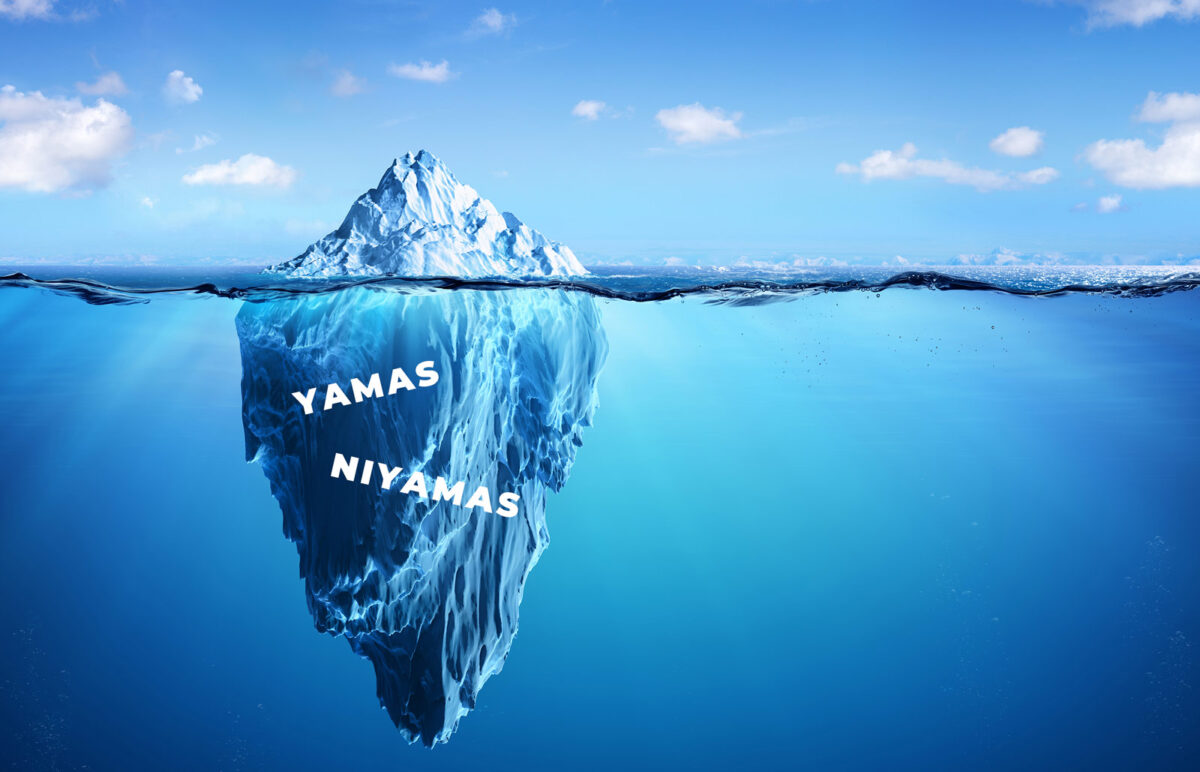When I began my yoga practice back in the year 2000, I was intrigued right away by the feelings that arose within me after each practice. I thought I was getting into a modality that would make me more flexible, which yoga did. However, I was wholly surprised by the affect yoga had on my mental and emotional well being. More calm, more alive, more self-aware, and more peace entered my state of being. That’s what hooked me. Not only was I getting physically strong and adaptable in my body, but also in my mind.
Knowing what I know now about yoga (which is not a lot, but more than when I started), I realize that the affect yoga has on a person is by design. It’s been passed down for generations, centuries, even thousands of years. The lineage and teachings are interwoven. Asana is just one side to an eight-dimensional prism. All sides lead to awareness and becoming a purer version of yourself.
This past month and into July I’m bringing another side of the prism (yoga principles) specifically during our asana practice. The first of which are the 5 Yamas. The Yamas are foundational to all yogic thought (and practices). They extend beyond the physical movement of asana into a way of living. The 5 Yamas are practical, step-by-step guidelines that facilitate taking ownership of your life and directing it towards the fulfillment that you seek.
You can think of them as “restraint” practices. I’ll mention them here and you can do your own research to incorporate them into your daily life, attend my yoga classes this month, and/or join me for a deep dive this fall in certification for becoming a Yoga Instructor.
The five Yamas (restraints):
- ahiṁsā – nonviolence or GENTLE living
- satya – truthfulness BALANCED living
- asteya – abstaining from stealing – GIVING not taking
- brahmacarya – celibacy or NOURISHING RELATIONSHIPS
- aparigrahā – not coveting or over-accumulating BEING FREE
Here is an example that came up in class recently (as told to me by a student):
A friend of mine lost her mother a few years back (I’ll call her Jane). It was
devastatingly painful, and she felt sorrow for many months. A family member (in-
law, who I’ll call Ann) seeing her grief tried to placate the emotion by saying,
“Your mom wouldn’t want you to be sad.” Those words, in fact, “take away” or
steal the emotional stress from Jane which she needs to feel fully in order to
process the loss of her mother. The practice of Asteya is to not steal or “take
away” the sadness (joy, anger, etc.), but instead allow space for one to work
through it. A caring hug with a simple acknowledgement of their sadness is a
good example of living into Asteya. As in, “I’m sorry you are feeling sad. It is a
hard thing to lose someone so dear to you.”
When, in the pursuit of daily duties, we are called upon to make a decision regarding how we treat others, the practice is to choose to act with restraint. To not harm, to be truthful, to abstain from stealing, to nourish our relationships, and to not covet or over-accumulate.
The Yamas are YOGA. They are that part of the iceberg that lies underwater and buoys up the tip. These abstentions are the reasons why yoga is different than “stretching” or “working out”. It’s about being response-able every day as our human experience allows. When a situation arises that has us lean into one of these practices, that we have the courage to take right action. It’s a life-long pursuit. One that can strengthen our inner vessel, bring us joy, peace, and confidence.
Upcoming Events
200 Hour Yoga Alliance Certified (Since 2017)
InTune 300-Hour Professional Yoga Training

